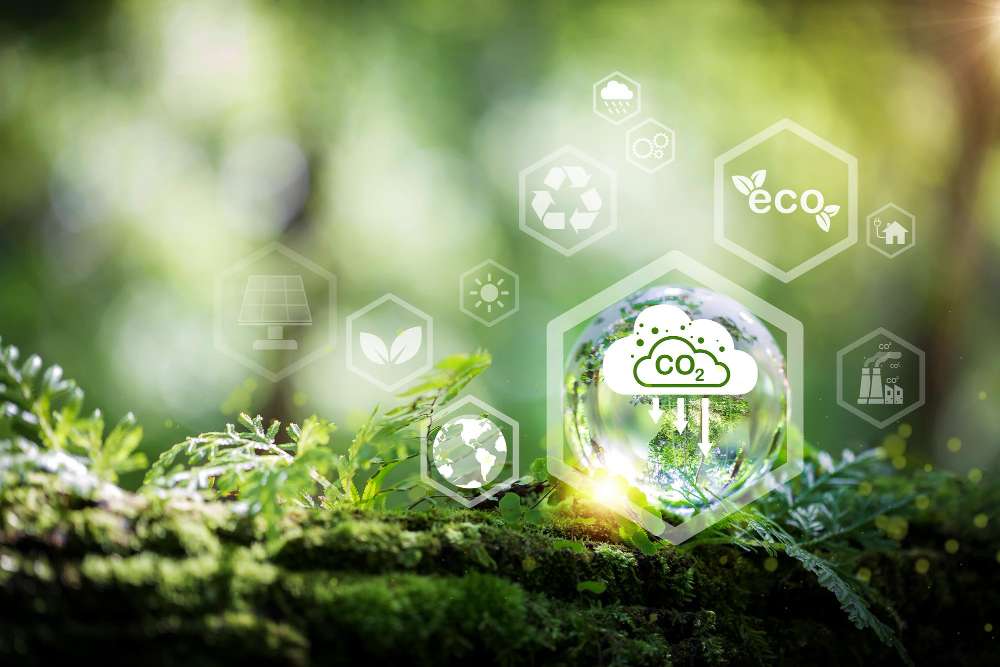The Paris Agreement of 2015 was at the time considered to be a major step towards achieving a sustainable future. It reaffirmed that the world community stands united to fight climate change. It also acknowledged the urgent need for decarbonisation to reduce greenhouse gas emissions, while ensuring that every nation develops, based on its own circumstances.
The agreement acknowledges that global temperatures are rising, and that this is caused by human activity. It works on a five-year cycle of increasing targets for each nation, with the targets determined by the nations themselves (nationally determined contributions, or NDCs). The agreement also acknowledges that no country should ignore the needs of its most vulnerable citizens. Since the agreement was signed in 2015, it has been ratified by more than 60 countries.
A lack of progress
To move towards decarbonisation and reduce carbon dioxide emissions globally, the Paris Agreement calls for reducing them to zero by 2050. This is an ambitious but achievable goal. Some analysts believe meeting this target will be difficult, though expensive – especially if countries collaborate and implement green policies simultaneously. Other analysts say the target is not aggressive enough, with worst case scenarios indicating that current lack of progress in reducing emissions may lead to catastrophe. The latter is one reason why the EU is expected to upgrade its target for emissions reduction.
To help reach decarbonisation and emission reduction goals, countries should implement various policies such as increasing public transport options and reducing carbon footprints for their citizens. These include measures such as insulating buildings, replacing fossil fuels with renewable energy options and planting trees in urban areas. Apart from national policies, the world community should work together to implement such policies at an international level. This way, all countries can benefit from reduced emissions while cost-effectively protecting the environment. If they do not, then one of the initiatives that may put pressure on the greatest emitters is the possibility of legal action.
The best path forward
There is debate over whether it is better to focus on reducing fossil-fuel consumption, increasing the use of renewable energy sources, or some combination of the two. Some argue that both approaches are essential and should be developed together to meet different energy demands and reduce CO2 emissions. There are also some who believe that we can easily achieve decarbonisation without harming the environment- by using hydrogen as our energy source instead of fossil fuels.
Although there is still uncertainty surrounding how to accelerate towards decarbonisation and what technologies we should use and how these will evolve, even current technologies allow us to make great progress. The Paris Agreement has helped nations understand what needs to be done. It has inspired many to implement policies that will help us create a sustainable future. Accelerating towards decarbonisation will not be easy or quick, but it is necessary if we want to live sustainably and protect the planet we share with future generations.
Companies leading the way in decarbonisation
There are several companies that are leading the way in decarbonisation, taking action to reduce their carbon footprint and contribute to the fight against climate change. Here are a few examples:
Tesla: Tesla is a company that is leading the way in the transition to electric vehicles and renewable energy. The company has made significant strides in developing electric cars, batteries, and solar panels, and is committed to achieving a net-zero carbon footprint. See our Tesla ESG report.
Google: Google has made significant investments in renewable energy, with a goal of operating on 100% renewable energy by 2030. The company has also implemented measures to reduce its carbon footprint, such as energy-efficient data centers and buildings. See our Google ESG report.
Apple: Apple has committed to achieving a net-zero carbon footprint by 2030, and has already achieved carbon neutrality for its operations. The company is also investing in renewable energy and working with suppliers to reduce their carbon emissions. See our Apple ESG report.
Unilever: Unilever, a multinational consumer goods company, has committed to achieving net-zero emissions from its products by 2039. The company is reducing its carbon footprint through measures such as using renewable energy and sustainable sourcing of raw materials. See our Unilever ESG report.
Ørsted: Ørsted, a Danish energy company, has transformed its business from a traditional oil and gas company to a leading renewable energy company. The company has made significant investments in offshore wind farms, and aims to be carbon neutral by 2025. See our Ørsted ESG report.
From commitment to action
Moving from commitment to action on our collective journey towards decarbonisation is not easy, given the radical nature of the change required. Despite overall support for renewables, emissions continue to grow. Yet as the UN Environment Programme’s Finance Initiative has shown, one of the first steps is for large numbers of companies (in this example, banks) to make commitments. The next step is for their progress against these commitments to be monitored and measured using a transparent reporting system. At the centre of such a reporting system must lie comprehensive data on commitments made by companies and whether they have fulfilled those commitments. That is one of the main foci of our work at Permutable.
